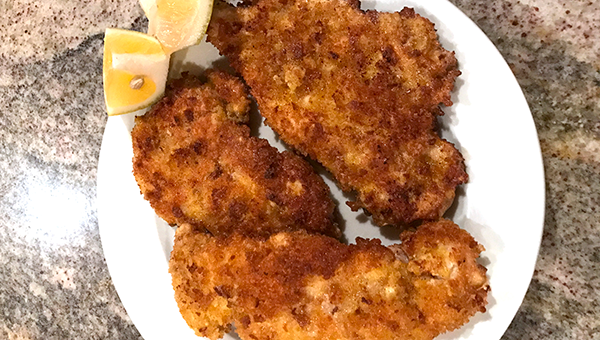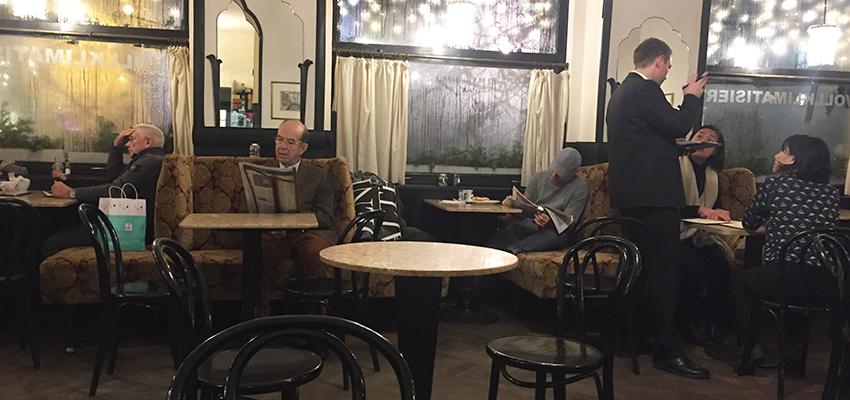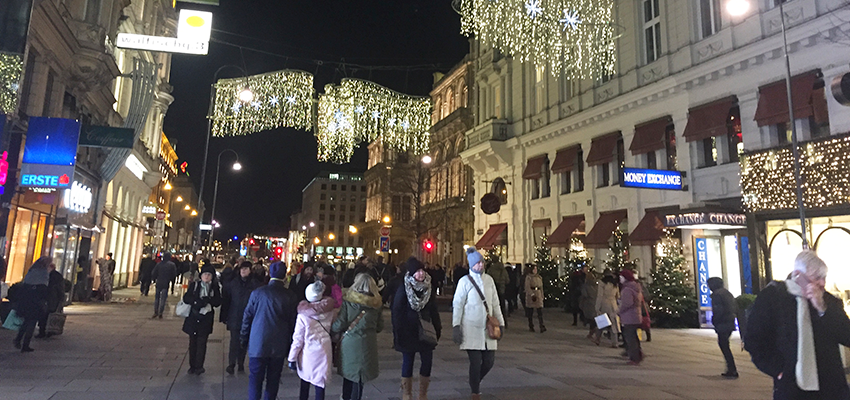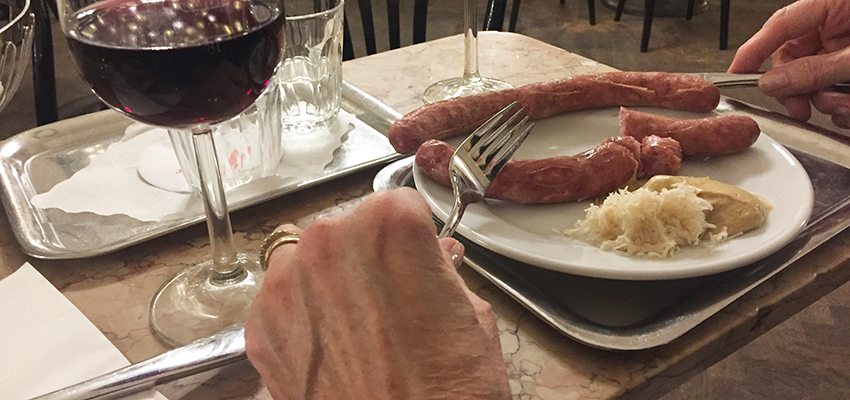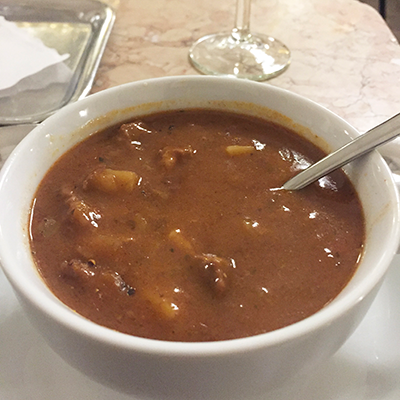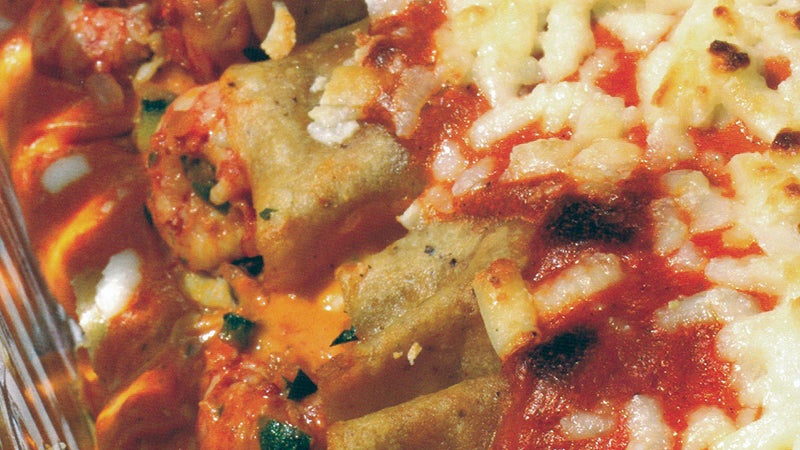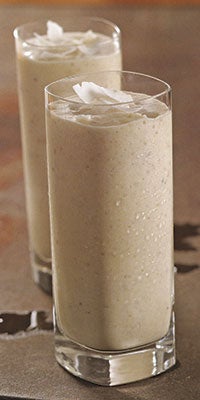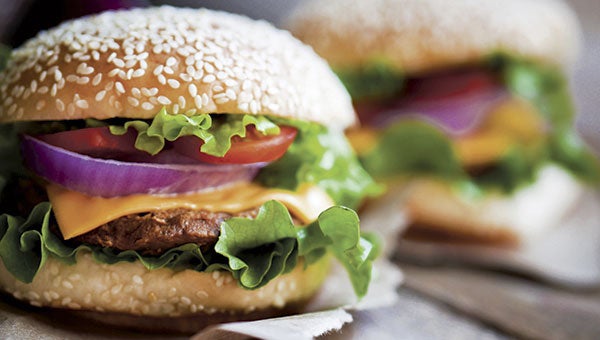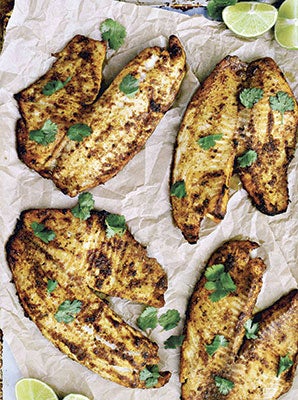Food, drink make Vienna interesting
Published 3:31 am Saturday, December 30, 2017
Since we love food and drink, we had a great time in Vienna. They are known for their café culture.
“In Vienna, the living room is down the street at the neighborhood coffeehouse. This tradition is just another example of the Viennese expertise in good living. Each of Vienna’s many long-established (and sometimes even legendary) coffeehouses has its individual character and characters….famously grumpy waiters [we didn’t find this particularly so]…these spaces somehow also feel welcoming, offering newspapers, pastries, sofas, quick and light [or not-so-light] workers’ lunches, elegant ambience….”
The story of coffee in legend involves the siege of Vienna by the Ottoman Turks, their defeat, and the left coffee beans. “In the 18th century, coffee boomed as an aristocratic drink. In the 19th century….coffee became a hit with the working class, too.”
We strolled the shopping streets each day and were impressed with the fashion in the windows—-not your local mall, but Vienna is Austria’s largest city with 2.6 million. The old Habsburg Empire was Europe’s most powerful and Vienna rivaled Paris and London. The old city is eminently walkable, decorated for Christmas all over and especially colorful at night. The old city wall circling the city is now a broad boulevard and easily traveled with the trams. We entered one of the many churches in the old city and sat to listen to the choir that was practicing for a concert that evening. The cathedral, St. Stephen’s, dates from 1300. It did lose its roof to fire during the bombing of WWII. Vienna is a very Catholic city. Mass was being said when we were at the cathedral and heavily attended.
We searched out all the old cafés that we could. Our German son-in-law had suggested some new Michelin starred restaurants, but we opted for the old traditional cafés and traditional food.
Heuriger are unique to Vienna, dating back to the 1780s. These serve new wines in the vineyards on the outskirts of the city—best visited in warmer weather where one can sit outside, so we deferred on these.
Our first night we sought something close. Café Tirolerhof was just about two blocks up the street. We learned that we were not to wait to be seated but find our own table, usually a marble-topped one and a banquette plus chairs for seating. It was cozy and looked like a lot of locals reading their papers and eating or drinking. We wanted something to eat and chose Gulasch (Hungary is just a short distance away and where I usually think of goulash) and some Wurst (sausages). I had the Debreziner, a spicy one with paprika. And some red local wine. The Zweigelt seems to be on all the café menus.
The guide book warned us of smoking, still very prevalent in Austria. But they had a separate enclosed room at the Tirolerhof for smokers. Beginning in 2018 all smoking in eating places is to be barred. We actually only ran into one place with nearby smokers—the American Bar.
The Wurst we ordered was served with Senf (mustard) and fresh grated Kren (horseradish) which we really liked. Wurst is ubiquitous, found in the cafés as well as stalls on the street and certainly in the Christmas markets.
One of our favorite cafés was the Café Landtmann which was just across from the Rathaus (city hall) Christmas Market. We visited a couple times and by then had learned the art of finding a table in a busy café. Perhaps our favorite local food was Wiener Schnitzel, huge portions usually served with a side of potato salad or a green salad. I like white wine and often ordered Grüner Veltliner, another local favorite. I did try another local specialty, Tafelspitz (boiled beef, Emperor Franz Josef’s favorite) which was the worst dish I had. It needed to be kicked up several notches for me.
One of the cafés I wanted to try was the Trześniewski, an institution started by a Polish cook over a century ago, famous for its open-face finger sandwiches. We peeked in and it was standing only. The sandwiches really looked good, but we wanted a seat.
We had dinner twice in another café near our hotel (a 300-year-old townhouse that has been a hotel for more than 100 years, Schlosshotel Römischer Kaiser), the Plachuttas Gasthaus zur Oper with a contemporary, classy interior. They actually hand out a little souvenir recipe titled ‘the art of the perfect Wiener Schnitzel.’ I checked out their cookbook and then bought it. And we enjoyed their classic meals.
I chose to make a chicken schnitzel using the recipe when I got home, since good veal is hard to fine.
Recipe for Weiner Schnitzel from Plachuttas Gasthaus zur Oper.
Serves 4
4 thin slices of veal or 4 chicken breasts
2 eggs
Kosher salt
All-purpose flour, about 1 cup
Breadcrumbs, about 2 cups
Vegetable oil or clarified butter for frying
Directions:
Beat the eggs with a fork and not a mixer.
Gently pound the schnitzel or chicken breast.
Season each side evenly with salt.
Lay the schnitzel in the flour.
Cover both sides with flour.
Coat first with the beaten eggs, and then with the breadcrumbs, on both sides, pressing lightly.
Fry in hot oil for 3-5 minutes till brown, and drain.
Garnish with lemon.
Guten Appetit!!


